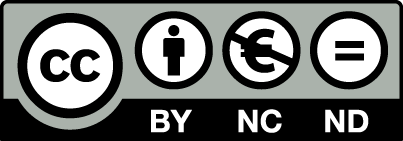Please use this identifier to cite or link to this item:
http://hdl.handle.net/2445/195871Full metadata record
| DC Field | Value | Language |
|---|---|---|
| dc.contributor.author | Gago, Lucas | - |
| dc.contributor.author | Vila, Maria del Mar | - |
| dc.contributor.author | Grau, Maria | - |
| dc.contributor.author | Remeseiro López, Beatriz | - |
| dc.contributor.author | Igual Muñoz, Laura | - |
| dc.date.accessioned | 2023-03-23T17:38:50Z | - |
| dc.date.available | 2023-03-23T17:38:50Z | - |
| dc.date.issued | 2022-08 | - |
| dc.identifier.issn | 0169-2607 | - |
| dc.identifier.uri | http://hdl.handle.net/2445/195871 | - |
| dc.description.abstract | Background and objectives: The detection and delineation of atherosclerotic plaque are usually manually performed by medical experts on the carotid artery. Evidence suggests that this manual process is subject to errors and has a large variability between experts, equipment, and datasets. This paper proposes a robust end-to-end framework for automatic atherosclerotic plaque detection. Methods: The proposed framework is composed of: (1) a semantic segmentation model based on U-Net, with EfficientNet as the backbone, that obtains a segmentation mask with the carotid intima-media region; and (2) a convolutional neural network designed using Bayesian optimization that simultaneously performs a regression to get the average and maximum carotid intima media thickness, and a classification to determine the presence of plaque. Results: Our approach improves the state-of-the-art in both co and bulb territories in the REGICOR database, with more than 8000 images, while providing predictions in real-time. The correlation coefficient was 0.89 in the common carotid artery and 0.74 for bulb region, and the F1 score for atherosclerotic plaque detecting was 0.60 and 0.59, respectively. The experimentation carried out includes a comparison with other fully automatic methods for carotid intima media thickness estimation found in the literature. Additionally, we present an extensive experimental study to evaluate the robustness of our proposal, as well as its suitability and efficiency compared to different versions of the framework. Conclusions: The proposed end-to-end framework significantly improves the automatic characterization of atherosclerotic plaque. The generation of the segmented mask can be helpful for practitioners since it allows them to evaluate and interpret the model's results by visual inspection. Furthermore, the proposed framework overcomes the limitations of previous research based on ad-hoc post-processing, which could lead to overestimations in the case of oblique forms of the carotid artery. | - |
| dc.format.extent | 12 p. | - |
| dc.format.mimetype | application/pdf | - |
| dc.language.iso | eng | - |
| dc.publisher | Elsevier | - |
| dc.relation.isformatof | Reproducció del document publicat a: https://doi.org/10.1016/j.cmpb.2022.106954 | - |
| dc.relation.ispartof | Computer Methods and Programs in Biomedicine, 2022, vol. 223, p. 106954 | - |
| dc.relation.uri | https://doi.org/10.1016/j.cmpb.2022.106954 | - |
| dc.rights | cc-by-nc-nd (c) Gago et al., 2022 | - |
| dc.rights.uri | https://creativecommons.org/licenses/by-nc-nd/4.0/ | - |
| dc.source | Articles publicats en revistes (Matemàtiques i Informàtica) | - |
| dc.subject.classification | Artèries caròtides | - |
| dc.subject.classification | Aterosclerosi | - |
| dc.subject.classification | Colesterol | - |
| dc.subject.classification | Aprenentatge | - |
| dc.subject.other | Carotid artery | - |
| dc.subject.other | Atherosclerosis | - |
| dc.subject.other | Cholesterol | - |
| dc.subject.other | Learning | - |
| dc.title | An end-to-end framework for intima media measurement and atherosclerotic plaque detection in the carotid artery | - |
| dc.type | info:eu-repo/semantics/article | - |
| dc.type | info:eu-repo/semantics/publishedVersion | - |
| dc.identifier.idgrec | 724743 | - |
| dc.date.updated | 2023-03-23T17:38:51Z | - |
| dc.rights.accessRights | info:eu-repo/semantics/openAccess | - |
| dc.identifier.pmid | 35777216 | - |
| Appears in Collections: | Articles publicats en revistes (Medicina) Articles publicats en revistes (Matemàtiques i Informàtica) | |
Files in This Item:
| File | Description | Size | Format | |
|---|---|---|---|---|
| 724743.pdf | 2.39 MB | Adobe PDF | View/Open |
This item is licensed under a
Creative Commons License



